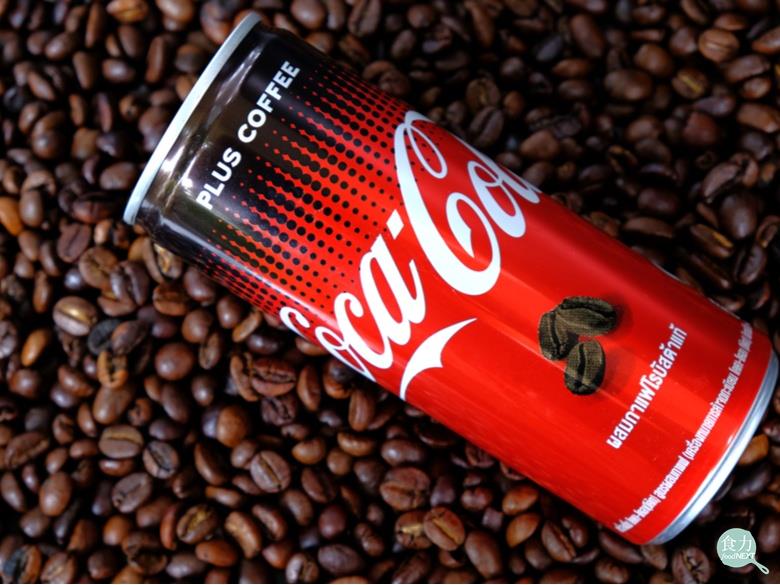Coffee is another way to make carbonated drinks. Coca-Cola enters Coffee Market

Professional coffee knowledge exchange more coffee bean information please follow the coffee workshop (Wechat official account cafe_style)
Sales of ready-to-drink coffee in the United States grew by 31% between 2016 and 2017, the fastest of all coffee products, according to a survey by Mintel.
Have you tasted the coffee from Japan to "Coca-Cola Coffee Plus" in Taiwan? The Coca-Cola (Coca-Cola) coffee, which was launched on a pilot basis in the Asian market in 2018 and will be fully launched in 25 markets around the world by the end of 2019, is just a litmus test for Coca-Cola to step into the coffee market.
Plus Costa Coffee, the world's second-largest coffee shop chain, which Coca-Cola bought from British hotel chain Whitbread plc for $5.1 billion in January 2019, shows that Coca-Cola has officially entered the coffee market with a two-pronged approach.
Carbonated drinks have declined year after year! Instant coffee is growing rapidly!
Why does Coca-Cola actively expand the coffee market? Let's start with the changes in the carbonated beverage (Carbonated Soft Drinks) market, which continues to shrink in the United States with the rise of people's health awareness. According to data from Beverage Digest (Beverage Digest) in 2017, the market share of carbonated drinks in the United States fell by 0.8% in 2016, indicating that carbonated drinks have been in a predicament of negative growth for 12 years. Although Coca-Cola continues to respond to consumers' health expectations by reducing sugar and adding fiber to its carbonated drinks, how to expand other markets other than carbonated drinks has always been their focus.
According to a survey conducted by Mintel, the sales of ready-to-drink coffee in the United States grew by at least 10% a year from 2013 to 2017, and by 31% from 2016 to 2017, making it the fastest growing category of coffee products. The global ready-to-drink coffee market is expected to grow to $3.1 billion by 2022, outpacing the growth of bottled water and other drinks, according to Euromonitor, an international market research firm.
Thus it can be seen that the demand for ready-to-drink coffee in the market is rising.
The acquisition of Costa and pre-pilot make Coca-Cola understand the market better.
But in fact, Coca-Cola launched a coffee product of the same name as early as 2006, but ended up two years later because the market was immature.
If you have failed before, why did you make a comeback this time? The successful acquisition of Costa Coffee is one of the main reasons. In the past, Coca-Cola's coffee business, mainly focused on Georgia Coffee, launched by its Japanese subsidiary, is very popular in vending machines, with sales of more than $1 billion, but only in the Asian market. With the acquisition of Costa, it also provides Coca-Cola with professional capabilities that Coca-Cola lacked in the coffee supply chain, vending and distribution channels, which is more conducive to the strategic layout of coffee.
In addition, Costa Coffee, as an established brand, will also serve as the main axis for Coca-Cola to open up the hot coffee market. Coca-Cola also plans to introduce Costa ready-to-drink products to the European market by the end of the second quarter of 2019.
Coke Coffee is positioned as a refreshing drink
This time, Coffee Coke, which will be launched around the world, is positioned as a refreshing drink. James Quincey, CEO of Coca-Cola, said Coca-Cola Coffee is designed to reach consumers on specific occasions and at the same time, such as when productivity drops in the afternoon. As early as 2018, the drink was sold on a pilot basis in some Asian countries, including Taiwan.
Through Coca-Cola Coffee and Costa Coffee, Coca-Cola has entered a market segment that is not yet fully familiar with before, and is better able to cope with the trend of sugar reduction in globalization. whether Coca-Cola can cut into the coffee market as successfully as tea will be a challenge for them.
END
Important Notice :
前街咖啡 FrontStreet Coffee has moved to new addredd:
FrontStreet Coffee Address: 315,Donghua East Road,GuangZhou
Tel:020 38364473
- Prev

Cost-effective Yunnan Coffee present situation and Development of Yunnan Coffee Industry
Professional coffee knowledge exchange more coffee bean information Please follow the coffee workshop (Wechat official account cafe_style) although boutique coffee has become a hit in China in recent years, most boutique coffee practitioners are showing off in China with a series of brainwashing pyramid certificates issued by NGO, which serves the interests of Europe and the United States. Some raw bean merchants even conspired to import
- Next

The coffee culture in Melbourne, the gathering place of fine coffee, Australian coffee.
For more information on coffee beans, please follow the Coffee Workshop (Wechat official account cafe_style) Australia is a coffee-obsessed country, especially Melbourne, which has long been known as the coffee capital of Australia. A variety of literary style, or small and fresh, or high-end, or stylish cafes all over the streets, from the cold
Related
- The milk tea cup becomes smaller?! Overlord Tea Girl launches a new "Return to Yunnan" series
- Accused of selling counterfeit and high-priced coffee beans! Well-known boutique coffee brand "Oukelao" bowed and apologized!
- How to make espresso dumplings? Can I eat coffee and glutinous rice balls together?
- Save the unformed and stagnant powder cakes in one second! What is the problem with stagnant water in the powder bowl of the espresso machine?
- What does hand-brewed coffee stop mean? Why is it not recommended to make coffee by hand?
- Is it normal to smell like coffee? Why does coffee smell like alcohol? What's wrong with the strong smell of cold extract ice dripping ice brewed coffee?
- How to solve the problem that hand-brewed coffee extraction takes too long? Why is the water flowing so slowly when making coffee?
- The main points of making Australian white coffee, the proportion details, how does Australian white properly foam and blend the flowers?
- Can ice water make cold extract coffee? What is the difference between room temperature water and ice water for making cold coffee?
- What milk is best for making latte and white Dirty coffee? What is the difference between different brands of fresh milk and pure milk for making coffee?

